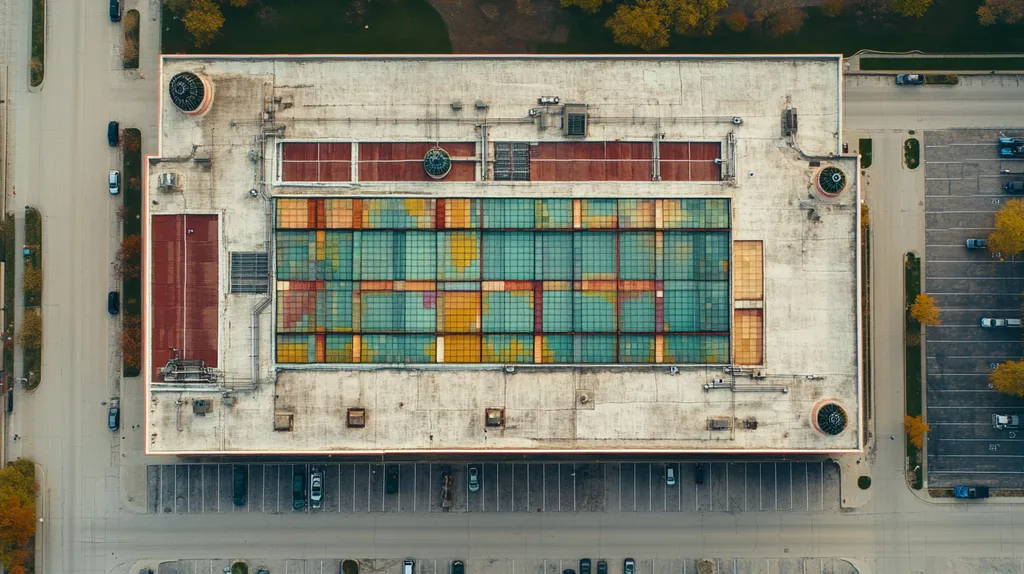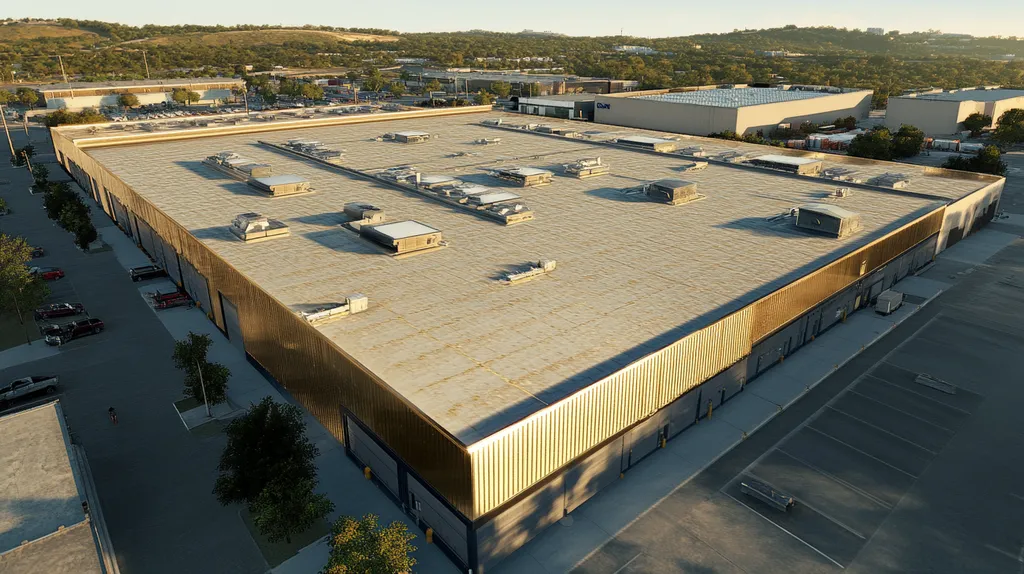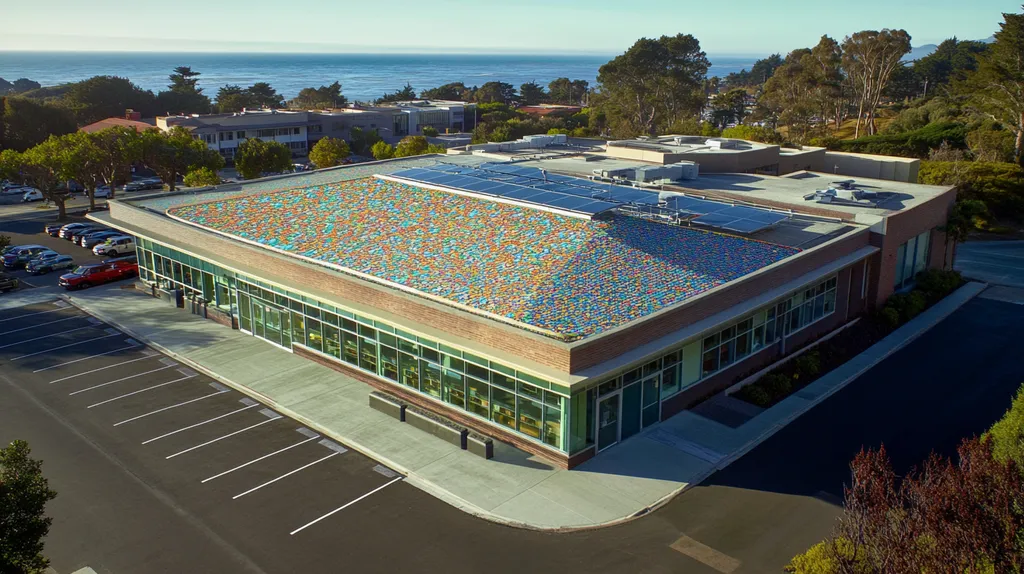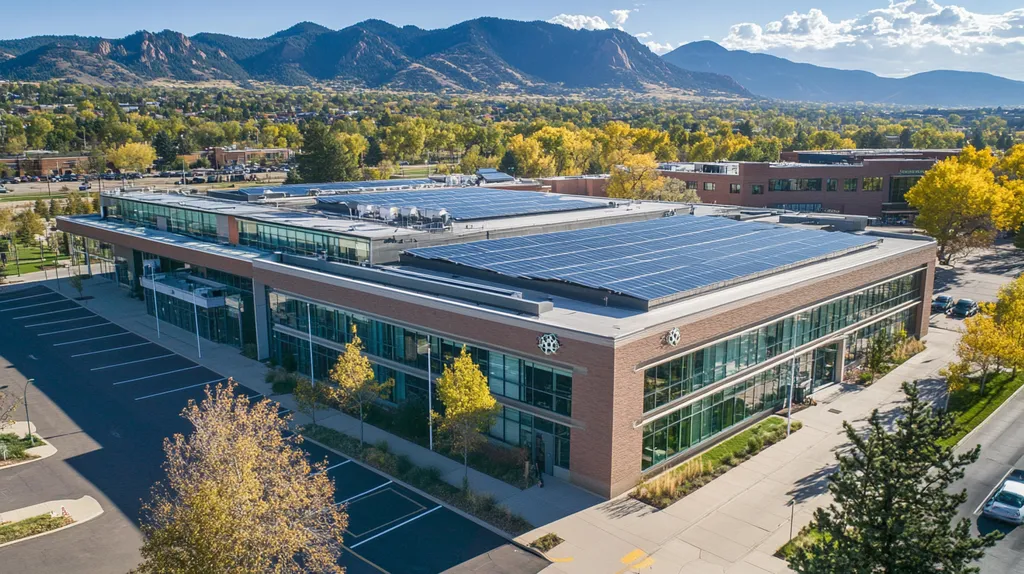In the complex landscape of commercial roofing, non-compliant coating installations cost property owners over $400 million annually in premature failures and regulatory fines. Recent industry studies show that 40% of coating projects fail to meet current standards, leading to voided warranties and increased energy costs.
From VOC regulations to reflectivity requirements, navigating the maze of coating compliance has become as crucial as the installation itself. Modern coating standards affect everything from insurance rates to building resale value.
This comprehensive guide demystifies essential regulations while providing actionable insights for property managers and building owners seeking to protect their roofing investments.
SECTION 1: THE BASICS EXPLAINED
In the high-stakes world of commercial roofing, proper coating regulations aren’t just red tape – they’re your building’s bulletproof vest. Recent industry data shows that non-compliant roof coatings lead to a 40% shorter roof lifespan and up to 35% higher energy costs. Whether you’re managing a sprawling warehouse or a boutique office complex, understanding these regulations is crucial for protecting your investment and avoiding costly penalties.
What It Is (In Plain Language)
Commercial roof coatings are essentially your building’s sunscreen – specialized protective layers that shield your existing roof from environmental damage. The Facilities Standards for the Public Buildings Service (P100) establishes mandatory requirements for these protective systems, including strict adherence to Buy American Act compliance. (source: GSA Public Buildings Service)
Think of these coatings as a sophisticated defense system. They come in various formulations, from elastomeric compounds that stretch and move with your roof to reflective acrylics that bounce away the sun’s harsh rays.
Modern coating systems do more than just waterproof – they’re engineered to reflect UV radiation, regulate temperature, and even self-clean during rainfall. These features work together to create a comprehensive protective barrier.
The regulations governing these coatings ensure they perform as promised, protecting both your investment and the environment. They set standards for everything from chemical composition to application thickness.
Why It Matters (To Your Building)
A compliant roof coating system isn’t just about following rules – it’s about maximizing your building’s performance and longevity. Properly regulated coatings can extend a roof’s life by 10-15 years, while non-compliant alternatives might fail within months.
Energy efficiency gains from compliant coatings are substantial. Buildings with properly specified reflective coatings typically see a 20-30% reduction in cooling costs during peak summer months.
Insurance companies increasingly scrutinize roof coating compliance. Non-compliant systems can void coverage or lead to premium increases, turning a seemingly small oversight into a major financial liability.
Environmental impact matters too. Compliant coatings help reduce urban heat island effects and lower your building’s carbon footprint – benefits that increasingly influence tenant decisions and property values.
How It Works
Compliant roof coatings create a seamless, monolithic barrier that bonds molecularly with your existing roof surface. Unlike paint, which simply sits on top, these sophisticated systems become an integral part of your roofing structure.
The magic happens at the microscopic level, where specially engineered polymers create a flexible membrane that expands and contracts with temperature changes. This prevents the cracking and splitting that plague lesser systems.
Advanced formulations include features like ceramic microspheres that enhance insulation properties and photocatalytic particles that break down air pollutants. These innovations transform your roof from a simple barrier into an active building performance component.
The application process is equally sophisticated, requiring precise surface preparation, temperature monitoring, and thickness control to achieve optimal performance. This is why regulations emphasize proper installation methods as much as material specifications.
SECTION 2: PRACTICAL APPLICATIONS
When it comes to commercial roofing, knowing when and how to apply protective coatings isn’t just smart business—it’s essential risk management. Buildings without proper coating systems face up to 70% higher maintenance costs and significantly shorter roof lifespans. From sprawling retail centers to mission-critical data facilities, the right coating application can mean the difference between a roof that thrives and one that fails prematurely.
Common Uses & Examples
Think of roof coatings as your building’s environmental armor, each type engineered for specific battlegrounds. White reflective coatings turn scorching sunlight into your ally, slashing cooling costs by up to 40% in sun-belt regions.
For industrial facilities, chemical-resistant coatings create an impenetrable shield against harsh emissions and atmospheric pollutants. These specialized formulations prevent premature degradation while maintaining crucial fire safety standards.
Commercial rooftops must incorporate fire-resistant materials or coatings to meet International Building Code requirements, ensuring both safety and structural integrity. (source: Parsons Roofing)
Healthcare facilities often opt for antimicrobial coatings that inhibit algae and fungal growth, maintaining sterile conditions while extending roof life. These sophisticated systems work 24/7 to protect both the building and its occupants.
When You Need It Most
Timing is everything in roof coating applications. The five-year mark in a roof’s life cycle often presents the perfect window for preventive coating, potentially doubling the system’s lifespan at a fraction of replacement costs.
Buildings in coastal zones face relentless salt spray and high humidity. Here, specialized moisture-barrier coatings become non-negotiable, especially during hurricane season.
Aging roofs showing signs of wear but maintaining structural integrity make prime candidates for restoration coatings. This approach can defer full replacement by 10-15 years while bringing the system up to current energy codes.
Winter preparation in northern climates demands coatings that can handle freeze-thaw cycles. The right application in fall can prevent thousands in spring repairs.
Interactions With Other Systems
Modern roof coatings don’t just sit there looking pretty—they’re active players in your building’s performance orchestra. They work in concert with ventilation systems to regulate temperature and moisture levels in the roof assembly.
Solar panel installations demand coatings that can handle increased foot traffic and protect mounting points. The right coating here prevents leaks while maintaining panel efficiency.
Smart building sensors and monitoring systems rely on stable roof conditions to function properly. Coatings help maintain the consistent environment these technologies need.
Even your building’s lightning protection system depends on proper coating selection. Conductive paths must remain uncompromised while maintaining watertight integrity.
SECTION 3: KEY TERMINOLOGY DECODED
In the complex world of commercial roof coatings, speaking the wrong language can cost you dearly. Industry statistics show that terminology confusion leads to 30% of coating failures and compliance violations. Whether you’re decoding specifications or reviewing contractor proposals, mastering these terms isn’t just about sounding smart—it’s about protecting your investment and avoiding costly mistakes.
Essential Terms Explained
Cool roofing technology has revolutionized how buildings manage heat and energy consumption. Modern coatings use advanced reflective properties to bounce away sunlight and reduce heat absorption, dramatically improving building efficiency. (source: Origin Exteriors)
Solar reflectance index (SRI) measures how well your roof reflects heat. Think of it as your roof’s sunscreen SPF rating—the higher the number, the better it shields your building from solar gain and helps maintain comfortable indoor temperatures.
Volatile Organic Compounds (VOCs) represent the harmful chemicals that can off-gas from some coating products. Modern low-VOC formulations protect both your roof and the environment, while meeting increasingly strict air quality regulations.
Understanding adhesion values helps predict coating performance. These numbers tell you how strongly the coating bonds to your roof surface—critical for preventing delamination and ensuring long-term protection.
Industry Jargon Translated
“Mil thickness” isn’t about military specifications—it’s the measurement unit for coating thickness, where one mil equals 1/1000th of an inch. Getting this wrong can mean the difference between a coating that lasts 15 years and one that fails in five.
“Substrate compatibility” sounds complex but simply means whether a coating will play nice with your existing roof surface. Not all coatings work on all surfaces—matching them correctly prevents expensive coating failures.
“Cure time” versus “dry time” often causes confusion. While paint may feel dry to the touch in hours, full chemical curing—where the coating reaches maximum strength—can take days or even weeks depending on weather conditions.
“Elongation percentage” measures how far a coating can stretch without breaking. In areas with extreme temperature swings, higher elongation prevents cracking as your roof expands and contracts.
Measurement & Units Simplified
Coverage rates tell you how many square feet one gallon will protect. But beware—theoretical coverage rates rarely match reality, as surface texture and application method can reduce coverage by 10-25%.
Tensile strength measures how much force a coating can withstand before failing. Think of it like a rubber band—the higher the tensile strength, the more stress your coating can handle without breaking.
Permeability ratings, measured in perms, indicate how much water vapor can pass through the coating. Too high means moisture problems; too low can trap dampness in your roof system.
Temperature requirements aren’t just suggestions—they’re critical specifications. Application outside recommended temperature ranges can reduce coating lifespan by up to 50% and void warranties.
SECTION 4: DECISION FACTORS
In the high-stakes game of commercial roofing, choosing the wrong coating is like bringing a water pistol to a firefight. Recent industry data shows that improper coating decisions lead to 45% higher lifetime maintenance costs and can slash energy efficiency by up to 30%. The stakes are particularly high in regions with strict energy codes, where non-compliant coatings can trigger hefty fines and mandatory replacements.
Cost Considerations
Cool roof codes in California now mandate specific Solar Reflectance (SR) and Thermal Emittance (TE) requirements, making compliance a non-negotiable factor in coating selection. These standards directly impact both initial costs and long-term energy savings. (source: Owens Corning)
Initial coating investments typically range from $2-8 per square foot, but this simple metric masks the true cost equation. Premium coatings might cost 30% more upfront but can deliver 40-50% longer service life.
Labor costs often exceed material expenses by 2:1, making proper application crucial. Skimping on installation quality to save money is like buying expensive tires but letting your teenager mount them with a monkey wrench.
Energy savings from reflective coatings can offset initial costs within 3-5 years in warm climates. Smart property managers track these returns meticulously, treating coating selection as an investment rather than an expense.
Performance Trade-offs
Every coating type comes with its own performance personality quirks. Silicone coatings excel at waterproofing but can be as slippery as a greased penguin when wet, making maintenance access challenging.
Acrylic coatings offer excellent UV resistance and cost-effectiveness but can struggle in ponding water situations like a fish trying to ride a bicycle. Their performance sweet spot lies in well-draining roofs in moderate climates.
Polyurethane systems provide superior impact resistance and flexibility but demand perfect application conditions. One rushed installation in improper weather can turn these high-performers into expensive mistakes.
The key is matching coating characteristics to your specific building challenges. A coating that works brilliantly on a warehouse in Phoenix might fail spectacularly on a cold storage facility in Seattle.
Lifespan & Durability Factors
Coating longevity depends heavily on environmental stress factors. UV exposure, temperature cycling, and mechanical abuse from foot traffic can reduce expected lifespans by up to 40% if not properly accounted for in selection.
Modern high-performance coatings routinely achieve 15-20 year lifespans when properly specified and maintained. However, this assumes regular inspections and timely repairs of any damage.
Substrate compatibility dramatically impacts coating durability. Even the most advanced coating will fail prematurely if applied to an incompatible or improperly prepared surface, like trying to frost a cake that’s still in the oven.
The most durable coating systems incorporate multiple layers with complementary properties. This belt-and-suspenders approach might seem excessive until you consider the cost of premature failure.
SECTION 5: COMMON CHALLENGES
In the high-stakes world of commercial roof coatings, what you don’t know absolutely can hurt you – and your budget. Industry data reveals that 65% of coating failures stem from predictable, preventable issues that property managers simply didn’t see coming. Like a tiny leak that becomes a ceiling collapse, minor oversights in coating maintenance and compliance can cascade into catastrophic failures that turn your roof from a protective shield into a liability magnet.
Frequent Problems & Solutions
Surface preparation mishaps rank as the number one coating killer, like trying to wallpaper over bubbled paint. Even premium coatings fail when applied to improperly cleaned or primed surfaces, leading to adhesion failures that can reduce system lifespan by up to 70%.
Temperature and humidity control during application proves particularly treacherous. Applying coatings outside manufacturer-specified conditions is like baking a cake at the wrong temperature – it might look fine initially, but disaster lurks beneath the surface.
Ponding water remains the silent assassin of roof coatings, creating dead zones where standard warranties fear to tread. Smart facility managers address drainage issues before coating application, treating the disease rather than just the symptoms.
Contractor shortcuts during application thickness measurements can doom a coating before it dries. Think of coating thickness like sunscreen at the beach – too thin means sunburn, regardless of how premium the product.
Warning Signs To Watch For
Early coating failure often announces itself through subtle surface changes, like a map of tiny cracks spreading across your roof’s horizon. These stress indicators typically appear 12-18 months before catastrophic failure, offering a critical window for intervention.
Blistering and bubbling, while dramatic-looking, actually serve as helpful early warning systems. These surface deformities signal underlying moisture issues that require investigation before they compromise the entire coating system.
Edge coating deterioration acts like a canary in your roofing coal mine. When perimeter areas start showing wear, it’s often a preview of coming attractions for the entire roof surface.
Changes in surface reflectivity might seem merely cosmetic, but they’re actually your coating’s cry for help. A dulling finish often indicates UV degradation that can accelerate system failure.
Preventative Approaches
Smart prevention starts with establishing a roof coating inspection calendar that’s as regular as your dental checkups. Quarterly visual inspections catch small issues before they become headline news in your maintenance budget.
Moisture mapping technology has revolutionized preventative maintenance, letting you see trouble spots before they become visible to the naked eye. This high-tech approach can spot potential failure points months or years before traditional inspection methods.
Creating detailed maintenance logs might seem old-school, but they’re your roof’s biography – telling the story of what works and what doesn’t. These records prove invaluable when planning future coating applications or troubleshooting issues.
Training maintenance staff in basic coating inspection techniques multiplies your eyes on the roof. Like teaching your teenager to check their car’s oil, this knowledge prevents expensive surprises and extends system life.
SECTION 6: NEXT STEPS & RESOURCES
In today’s regulatory landscape, choosing the wrong path for your roof coating compliance is like playing Russian roulette with your building’s future. Recent data shows that 40% of commercial properties face costly corrections or penalties due to overlooked compliance requirements. Whether you’re planning your first coating project or updating existing systems, getting it right requires asking the right questions, understanding current standards, and staying ahead of evolving regulations.
Questions To Ask Providers
Think of provider interviews like a first date – ask the tough questions upfront before making any commitments. Start with their compliance track record and documentation procedures for meeting current standards.
Request specific examples of how they’ve handled similar projects on buildings matching your configuration. A provider who can’t readily discuss past compliance challenges is like a chef who can’t describe their signature dish.
The Facilities Standards for the Public Buildings Service (P100) establishes mandatory standards for roofing installations, making compliance verification essential for any qualified provider. (source: General Services Administration)
Dig into their quality control processes. How do they document application thickness? What’s their protocol for weather monitoring during installation? These details separate the professionals from the pretenders.
Don’t forget to investigate their warranty terms and, more importantly, their history of honoring those warranties. The finest print often hides the biggest headaches.
Industry Standards & Guidelines
Today’s roofing standards are as layered as the coatings themselves. From ASTM testing protocols to NRCA installation guidelines, each standard plays a crucial role in your coating’s success story.
Building codes vary by jurisdiction like local dialects – what’s mandatory in Miami might be optional in Minneapolis. Smart property managers maintain relationships with local code officials to stay ahead of changes.
Energy performance standards have teeth these days. Cool roof requirements, thermal resistance minimums, and reflectivity ratings aren’t just suggestions – they’re mandates with financial consequences.
Environmental regulations add another dimension to compliance. VOC limits, disposal requirements, and workplace safety standards create a complex web of obligations that demands careful navigation.
Further Learning Simplified
Knowledge in the roofing industry ages like milk, not wine. What was cutting-edge last year might be obsolete today. Industry associations offer certification programs that keep you fluent in the latest compliance language.
Digital learning platforms have revolutionized access to expertise. Webinars, virtual conferences, and online forums let you tap into national experts without leaving your office.
Build relationships with manufacturers’ technical representatives. These walking encyclopedias of coating knowledge often know about regulatory changes before they hit the mainstream.
Consider joining local building owner associations. These groups often share compliance war stories and solutions that no textbook can teach, turning others’ expensive lessons into your free education.
Looking Ahead
With over $400 million lost annually to non-compliant roof coatings, the stakes for proper installation and maintenance have never been higher.
As regulations continue to evolve, particularly around environmental impact and energy efficiency, staying informed isn’t just good practice—it’s essential for survival in the commercial property market.
Smart property managers recognize that coating compliance represents far more than a checkbox on an inspection form—it’s a critical investment in their building’s future performance and value.
By understanding these regulations, following proper installation protocols, and maintaining thorough documentation, facility managers can transform their roof coating systems from potential liabilities into powerful assets that enhance building performance while ensuring regulatory peace of mind.
FREQUENTLY ASKED QUESTIONS
Q. What are the basic regulations for commercial roof coatings?
A. Regulations for roof coatings ensure compliance with safety and performance standards. Following these rules can boost your roof’s lifespan and energy efficiency, avoiding costly penalties and repairs down the line. Understanding them isn’t just red tape; it safeguards your investment.
Q. When should I apply protective coatings on my industrial roof?
A. The best time to apply coatings is around the five-year mark in your roof’s lifecycle. This preventive measure can significantly extend the roof’s lifespan and reduce maintenance costs. For specific climates, consider seasonal conditions before application for best performance.
Q. How do I decode terminology related to commercial roofs?
A. Understanding roofing terminology, like “mil thickness” and “adhesion values,” is crucial for making informed decisions. Mastering these terms helps prevent compliance issues and mistakes in contractor communications. Think of it as learning the lingo before engaging in a business negotiation.
Q. What decision factors should I consider for my commercial roof?
A. Key decision factors include cost, performance characteristics, and environmental demands. Choosing the right coating will depend on your facility’s specific needs, compliance with local regulations, and potential energy savings over time. Analyze all options carefully to avoid future liabilities.
Q. What common challenges do commercial roof coatings face?
A. Frequent challenges include poor surface preparation and improper application conditions, which can dramatically reduce lifespan. Regular inspections help identify issues early, allowing for timely maintenance and avoiding catastrophic failures that can derail your roofing budget.
Q. What steps should I take for compliance with roofing standards?
A. Start by asking your provider about their compliance history and adherence to local building codes. Stay informed about industry regulations by consulting standard organizations and maintain relationships with local officials for updates. Proactive measures will help avoid costly penalties.
Q. What resources can help me better understand roof coating regulations?
A. Utilize industry associations, online learning platforms, and webinars to stay updated on roof coating knowledge. Engaging with technical representatives from manufacturers also provides valuable insights into compliance changes that could impact your projects. Network with local property owner groups for shared experiences.











